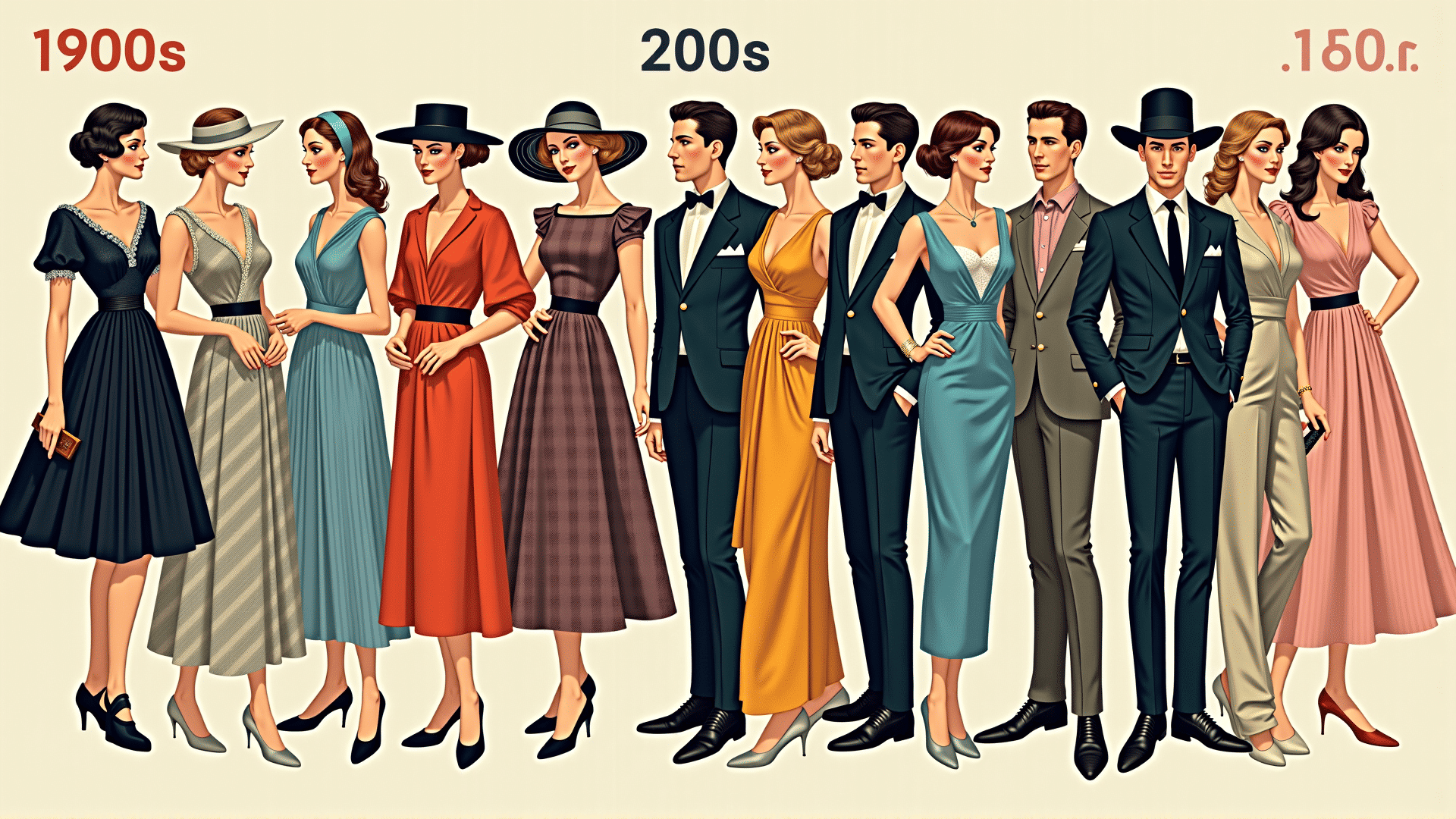The 20th century was an era of profound transformation in fashion, mirroring the tumultuous social and political changes of the times. It was a century that saw fashion evolve from the ornate and formal silhouettes of the early 1900s to the relaxed, casual styles of the late 1990s. Each decade brought with it new movements, iconic styles, and cultural shifts that characterized the fashion landscape.
The 1920s began as a period of liberation, with the rise of the 'flapper' style redefining women's fashion. Flappers embraced a look that was radically different from previous decades: bobbed hair, knee-length dresses, and an androgynous silhouette. This era was marked by a sense of freedom and rebellion, reflecting women's newfound independence in the post-World War I society. The drop-waist flapper dress became symbolic of this transformative era.
As the world transitioned into the 1930s and 1940s, fashion responded to the socio-economic realities of the Great Depression and the Second World War. With resources limited, styles became more conservative and practical. Functional suits and dresses were crafted with an emphasis on durability. Women often made do with what they had, altering older garments and focusing on minimalist beauty. The war saw a rise in utilitarian fashion, with military influences evident in the structured designs.
The post-war 1950s welcomed a return to glamour and luxury. Christian Dior’s 'New Look' epitomized this shift with its voluminous skirts and cinched waists, channeling a feminine silhouette that echoed a desire for return to traditional gender roles after the war. Meanwhile, Hollywood stars became fashion icons, influencing the styles of everyday women now seeking elegance and sophistication.
The 1960s ushered in a new wave of experimentation and youth culture. With the influence of rock n' roll, fashion became more colorful and eclectic. The decade saw the rise of mini skirts, bold prints, and unconventional materials. London emerged as a fashion capital, with designers like Mary Quant leading the charge in creating youthful and playful designs.
The 1970s continued this journey of exploration with a focus on individual expression. People embraced a diverse range of styles, from the bohemian and hippie movements to disco glam. Bell-bottoms, headbands, and platform shoes became quintessential staples of the era. This decade was marked by an emphasis on freedom and a reaction against the conformity of earlier years.
As the world entered the 1980s, fashion saw a dramatic shift towards excess and extravagance. Power dressing dominated the scene, as individuals sought to project success and ambition through bold shoulder pads and tailored suits. Neon colors, oversized accessories, and statement sneakers defined the decade's aesthetics, mirroring the era's exuberant economic optimism.
The 1990s brought a counterculture that favored minimalist and casual styles. Grunge, with its signature look of flannel shirts and distressed denim, epitomized a rebellion against the opulence of the 1980s. Simplicity and comfort became key, with streetwear and athletic influences making significant inroads into mainstream fashion. The emphasis was on individual comfort and an understated approach.
As we reflect on the fashion transformations of the 20th century, it is clear that clothing choices were not merely guided by aesthetic preferences but were deeply integrated with broader social changes. From the roaring twenties to the grunge movement of the nineties, each era's distinct style has left an indelible mark on the fashion landscape, influencing how we dress and express ourselves today.
